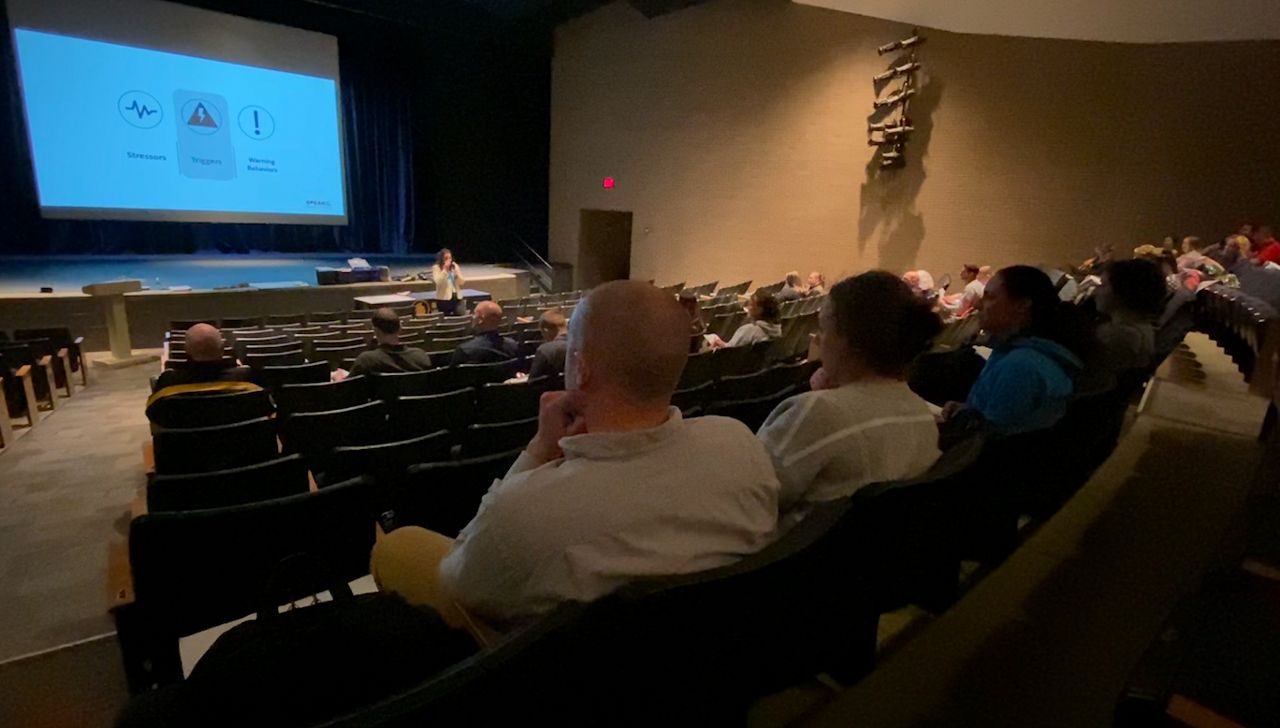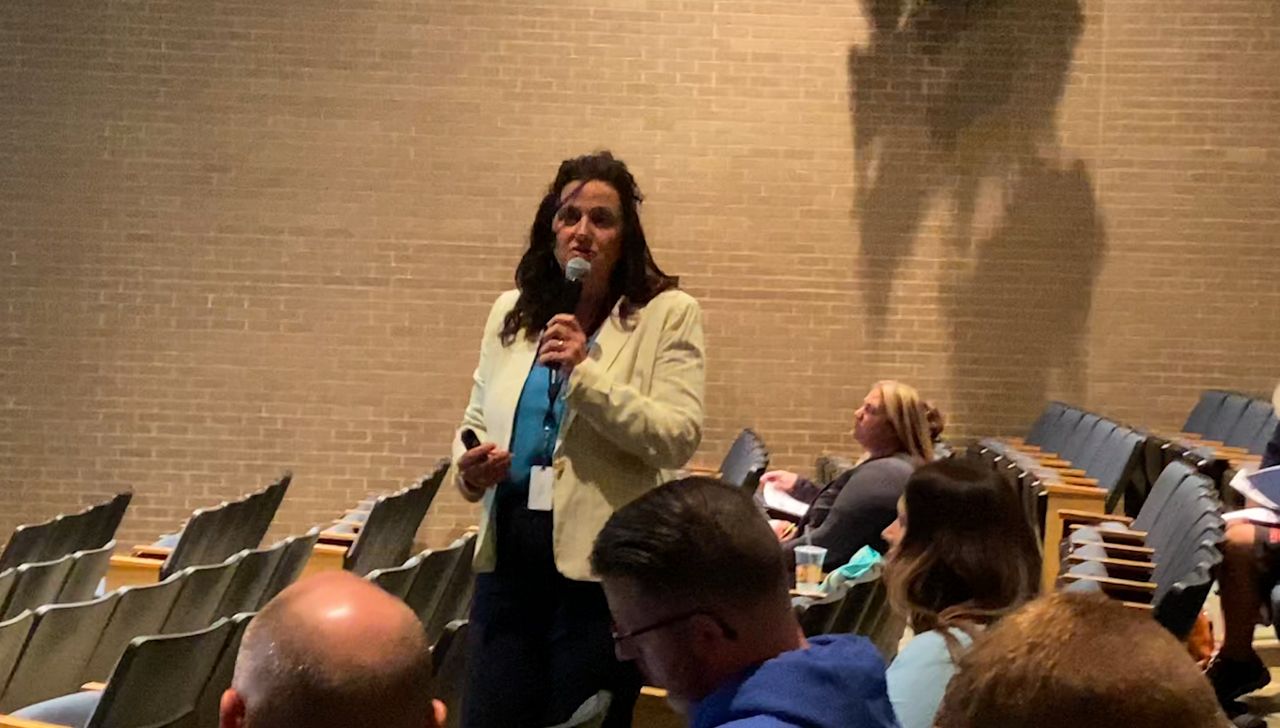WAUSAU, Wis. — Emily Perry was among the educators taking threat assessment training at Wausau West High School Thursday.
She’s the mental health coordinator for the Onalaska School District. Perry said the intent of the training is heading off school violence before it happens.
“Most of the time there are warning signs, things to look for,” she said. “Just being more cognizant and more present and more aware is going to help us be more preventative than reactive to situations.”
The training is provided by the Wisconsin Department of Justice’s Office of School Security at the request of school districts around the state.

Perry said it’s about getting help for students in need.
“It’s not just identifying the threat but also taking it to the next level so that we’re giving the child and the family some supports,” she said.
Trish Kilpin, who heads up the department’s Office of School Safety, said part of the training is giving staff and others the confidence to get involved if something looks out of the ordinary.
“One of the ways we know is effective to prevent violence is if we have a community approach,” she said. “If parents and students and bystanders, or people who become aware a child may be behaving in ways that suggest they could engage in violence, we need to know about that and they need to trust us so we can assess the information and develop an appropriate plan.”

School safety goes beyond things like locked doors and emergency plans; it also includes communication and awareness, said Caleb Bushman, the Wausau School District’s director of pupil services.
“Our support staff, our teachers, other students, they’re on the front line of all it. They’re seeing things on a day-to-day basis,” he said. “Do they have the confidence? Do they have the knowledge to make contact with somebody who can help and support the? Getting them to a school counselor, getting them to a social worker, getting them to somebody who can investigate further to make sure we’re intervening prior to there being a catastrophe.”
Perry said it ultimately boils down to providing students help.
“We don’t want to look back and say, ‘We’re too late.,’” she said. “It’s always being preventative and building up their community.”



